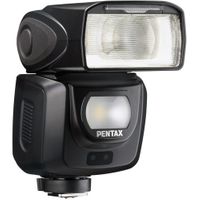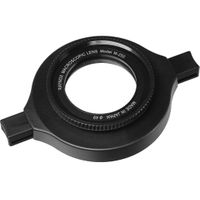Equipment
Of course, the equipment used is very important for macro photography. However, it must be said that there are actually no bad cameras and macro lenses on the market. Those who do not make billboard-sized printouts, but publish them on social media and have calendars and the occasional poster printed, will be happy with most of the offers. In general, it should be noted that cameras with a small sensor such as Micro Four Thirds or APS-C sensors are better suited for macro photography than full-frame cameras, since less magnification is required for a format-filling photo. This has a positive effect on the depth of field. Mirrorless systems are smaller and lighter than SLR cameras but do not offer an optical viewfinder. Therefore it is important to clarify personal preferences before a decision is made. Sticking with one of the bigger players in the market has the benefit of an extensive range of lenses and accessories to choose from, and the third-party and used markets are also well stocked. Whether it's Sony, Canon, Nikon, Fuji or Olympus doesn't really matter from a technical point of view. The camera should fit comfortably in the hand and the operating concept should be understandable. In depth reviews are carried out in large specialist magazines and online portals, which provide a good basis for decision-making.
When I first started out, I opted for the Pentax DSLR system because they offered the most bang for the buck at the time. Pentax builds extremely robust cameras with very good viewfinders and sensors from Sony. It should be noted, however, that Pentax is classified as exotic and is neglected by many third-party providers.
Pentax K3
Battery grip
24 MP APS-C CMOS sensor by Sony
7 frames/s
Dual Card Slot
Weatherproof
Pentax AF360FGZ II
focussing light
Head can be swiveled and tilted
Weatherproof
For operation I use "eneloop pro"
rechargeable batteries (4x AA)
HD Pentax DA 1.4 AW AF Converter
increases magnification by a factor of 1.4
Weatherproof
Pentax SMC-DFA 100 mm Macro WR
Magnification max. 1:1
Weatherproof
Raynox DCR 250
Close-up lens
8 diopters
Godox MF12 Macro flash
as filling- and backlight
Slave mode, triggered optically by main flash
With the combination of lenses I use, consisting of a converter, macro lens and Raynox close-up lens, I work in a magnification range between 1:1 and 3:1, which is ideal for subject sizes between 5 and 20 mm. In terms of price, this somewhat adventurous combo is slightly below the "holy grail" of extreme macro lenses, the MP-E 65 from Canon, which unfortunately is not available with a Pentax bayonet. The Laowa lenses available for Pentax are not really alternatives for me because of the manual aperture. I find focusing with the dark viewfinder image at working aperture too uncomfortable. However, this is not a disadvantage for users of mirrorless cameras in which the viewfinder image is processed electronically.
The diffuser I use to soften the flash is described in the "Lighting" chapter.





